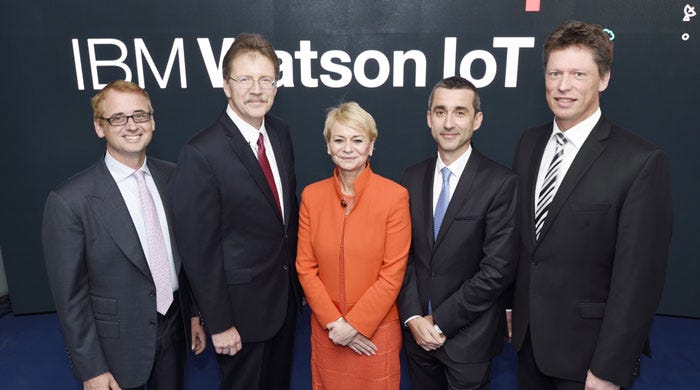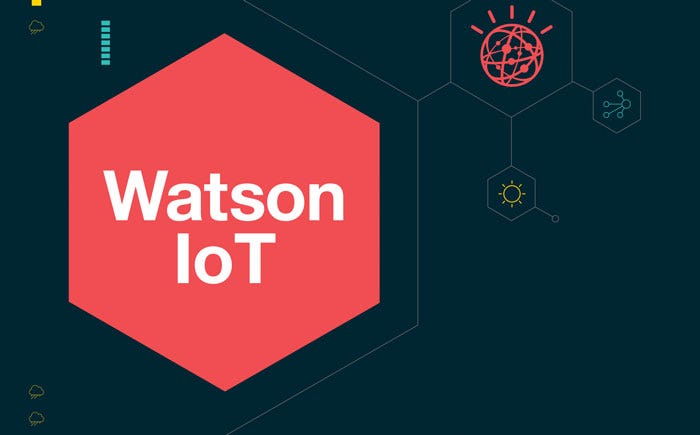
IBM’s launch of its new Watson IoT Center in Munich allows it to get a running start on the amalgamation of IoT and the rise of analytics. Management of big data sets is well beyond the abilities of individual — or even teams of — analysts, and the administration of information does not even touch on the facility to leverage this data to deliver benefits. Gartner sees over 6 billion connected devices by next year, so issues with data aggregation and use will grow as more objects come online. This is a problem that IBM is attempting to solve with its new approach using the cognitive abilities of its Watson computing platform.
“The Internet of Things will soon be the largest source of data on the planet,” noted Harriet Green, IBM’s newly-minted General Manager of Watson IoT and Education, “Yet 90% of that data is never acted upon.”
IBM’s pivot towards IoT allows it to assist companies and innovators incorporate sensor technology more efficiently through management and utilization of the data it offers.

Watson in Germany
The Munich Watson supercenter marks the beginning of a new approach to managing IoT and big data. It is the first time that IBM has operated an HQ outside of the U.S., signaling its commitment to the companies that currently form the backbone of one of Germany’s fastest-growing business hubs. The move to Munich locates IBM at the center of the developing world of the industrial IoT: Munich is a hive of business activity, home to appliance, electronics and auto manufacturers, healthcare enterprises and technology companies. This well-developed ecosystem boasts a number of veteran companies interested in tapping into IoT to streamline operations; it also provides a foundation for the fast expansion of IoT. IBM already has its finger on the pulse of manufacturers. For example, Siemens, which employs over 300,000 workers and touches areas as diverse as healthcare and energy, is betting on its partnership with IBM to develop smart buildings. Munich is also home to one of Germany’s “Big 3” automakers. BMW (which also owns Rolls-Royce) has been using IBM’s predictive analytics to enhance new model rollouts and streamline production, maintenance and repair processes.

Investment in IoT
IBM’s launch of its headquarters in Munich was preceded by its March commitment to invest $3 billion in its IoT unit. Pinning its hopes on the rapid rise of the evolving data-rich environment has moved IBM to unveil another eight Watson Client Experience Centers that span global tech hotspots like Beijing, Tokyo, Seoul, Sao Paolo and multiple sites in the U.S. The Munich campus itself will host 1,000 workers, including developers, researchers and support staff, a number that will be matched by its other teams across the globe. The recent disconnect between the American and European approaches to data privacy issues highlighted by the strike-down of the Safe Harbor pact has reinforced the importance of data management, so IBM’s biggest expansion in Germany in 20 years will be an interesting experiment in effectively managing big data under more limited parameters.
Relating Man and Machine
IBM’s approach to analytics focuses on not only aggregating the data from IoT, but on allowing for the comprehension and leveraging of the patterns that emerge from it through the incorporation of machine learning. The open, cloud-based Watson platform is designed to create a synergy between man and machine in order to enhance the complete range of human experience, from the industrial processes that deliver goods to the everyday flow of life.
IBM’s four “families” of APIs include Natural Language Processing (NLP), Machine Learning, Video and Image Analytics, and Text Analytics. Collectively, these APIs provide a foundation for speeding the development of data-enriched ideas, processes, goods and services. IBM’s partners have access to not only the APIs, but also benefit from the knowledge, tools and support services delivered through its IoT centers. The NLP is the API that most directly serves to ensure the rapid acceptance of analytics-based systems, since it will be the “face” — or perhaps, the voice — of the technology. NLP allows individuals to interact with computers by skipping the programming language. Users can instead simply ask questions about problems or have the system deliver understandable, useful data using regular speech. The Machine Learning API is the workhorse, constantly processing data and monitoring information to develop correlations between data sets. Not only does it keep tabs on incoming information, but the API also identifies patterns and trends. The Video and Image Analytics API harvests the data found in images, making it possible to identify locations based on photos or videos, as well as pinpoint patterns. The Text Analytics API mines the data that typically is forgotten — call center records, blogs, social media engagements, user comments, tweets and logs. It uncovers correlations between the conversations or notes and other data sets to highlight areas of concern or trends.
The advent of IBM’s new IoT centers is poised to drive innovation in IoT and analytics, providing a springboard to the spread of the technology. Smart buildings, cars, gadgets, appliances and medical devices are only the beginning. As more connected objects and services come online, IBM has positioned itself as the nexus of analytics understanding and development, and has sounded its call-to-arms: the time to implement IoT is now.
Refer to the full article on TechTarget. Published on December 31, 2015. Author Scott Amyx.

















